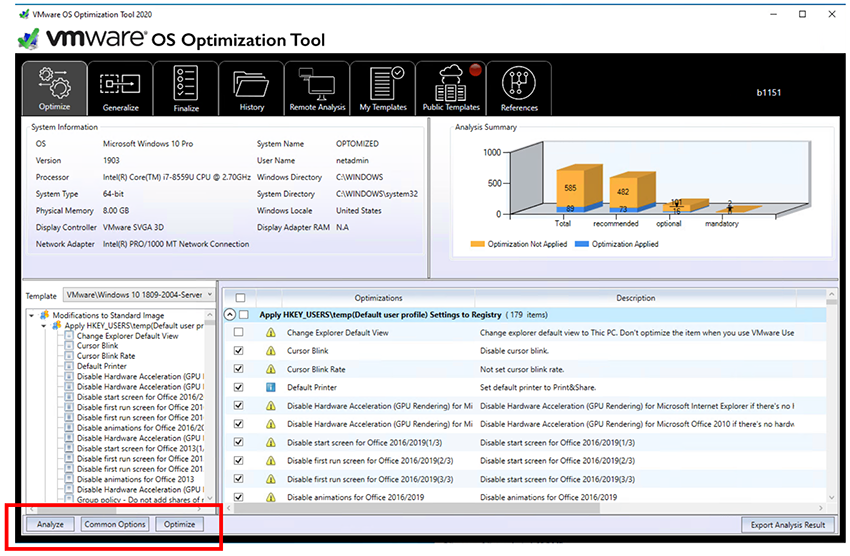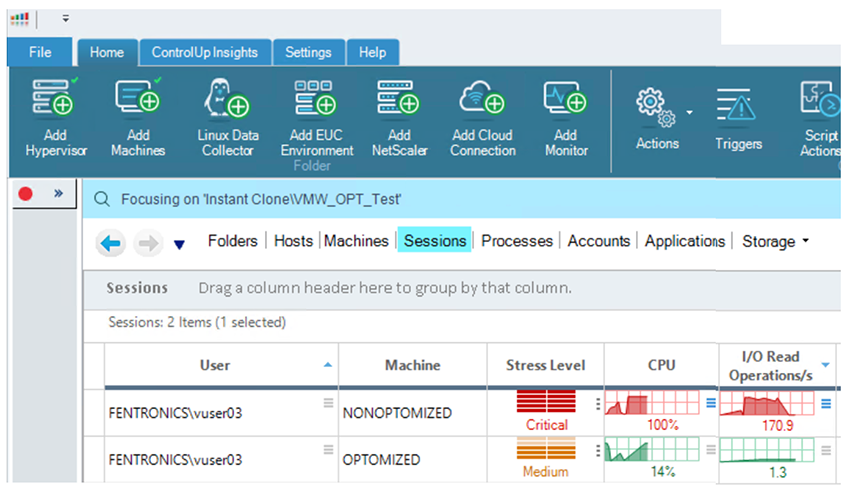
With the vast percentage of the global workforce working remotely, keeping your EUC environment healthy is imperative to ensure business continuity and deliver a great user experience.
Over the last couple of months, we’ve seen a huge influx of new virtual desktop users, following a global move to remote work during the Coronavirus crisis. While some system admins have increased the number of users in their existing virtual desktop infrastructures (VDI), others have scrambled to set up new VDI environments.
Whether your company has been using VDI for years or you are just getting started with it, you need to use your IT resources (e.g., compute, storage, and network) as judiciously as possible. When multiplied over hundreds (or even thousands) of devices, a slight performance gain on each desktop can lead to huge overall savings in IT resources.
A few years ago, VMware saw that modern desktop OSes were designed for standalone physical systems where IT resources utilization wasn’t an issue; but, in a VDI environment where IT resources are oversubscribed, there are tweaks and optimizations that can be applied to a desktop to make it more performant and less resource-intensive.
In the early days, VMware system engineers (SEs) had a manual checklist for optimizing their virtual desktops, though VMware eventually created a script to automatically apply these best practices. This gave rise to the venerated VMware OS Optimization Tool (OSOT), which took off like wildfire and is now VMware’s most downloaded Fling.
In the early days, SEs were seeing decreases of up to 30% in desktop IT resource usage after applying the tool. Lately, I haven’t seen gains that are that dramatic, but I have heard from other users that they can see a huge difference between a desktop that has had this tool applied and one that hasn’t.
The tool can be downloaded for free from VMware’s Fling site.

To run the tool, click Analyze, examine the changes that it will make, and then click Optimize.

To get an idea of how effective the OSOT is, I ran some baselines on both a fresh-from-the-box Windows 10 desktop, and another desktop that had already been optimized.
NOTE: This was more of an ad hoc test rather than a benchmarking exercise, but it did mimic results I’ve seen in the past when comparing non-optimized and optimized desktops.
Logging in to the optimized desktop as a new user took just eight seconds, while the non-optimized desktop took twenty seconds—more than double the time. Also, IT resource usage was considerably less when logging in to the optimized desktop. Using ControlUp, it was easy to compare the two desktops and get quantifiable data.


After letting the sessions sit idle for ten minutes, I looked at the desktops again and saw that the optimized desktop had 40 fewer processes running on it and was consuming fewer resources.

I then logged off the machines, waited ten more minutes, then logged back in as the same user. It took four seconds to log in to an optimized desktop, and eight to log in to the optimized desktop. Again, I saw less resource usage on the optimized desktop during the login process.

By using the VMware OSOT, you can deliver a better user experience by decreasing end-user login time, while also decreasing the amount of IT resources that are being consumed. As an added bonus, running desktops that have been optimized will lessen the impact of large numbers of users logging in to their desktops simultaneously; this means that you can run more desktops per host, which equates to a greater VM density and a lower cost per desktop.
VMware + ControlUp: Optimized, efficient, simple.